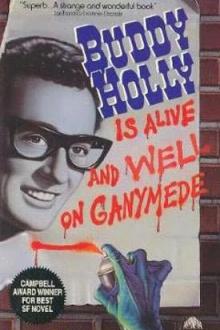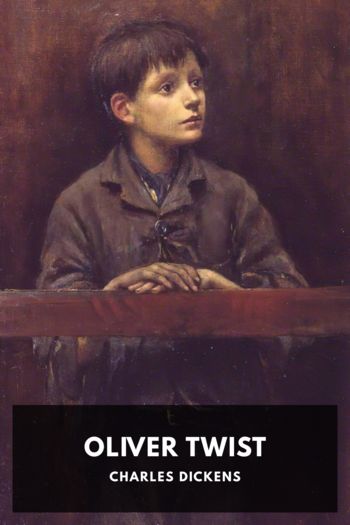Buddy Holly is Alive and Well on Ganymede by Bradley Denton (my reading book .txt) 📕

- Author: Bradley Denton
- Performer: -
Book online «Buddy Holly is Alive and Well on Ganymede by Bradley Denton (my reading book .txt) 📕». Author Bradley Denton
Buddy Holly is Alive and Well on Ganymede
Bradley Denton
1991
For Barbara Jean…
…these words of love
“The Midwest has a lot to answer for.”
—HOWARD WALDROP, following the August 1990 Wisconsin helicopter crash that took the life of guitarist Stevie Ray Vaughan
In life, their names were linked for only a few cold, miserable weeks.
In death, their names became a Trinity, as if carved into the same tablet of sacred stone.
Ritchie Valens. The Big Bopper.
Buddy Holly.
Years later, we would look back with longing and say that the music had died.
We should have known better.
I was conceived in cold circumstances in the front seat of a 1955 four-door Chevrolet in the early morning hours of Tuesday, February 3, 1959, near Des Moines, Iowa. I read about this in Volume I of Mother’s diary when I was nine years old. I was terrified that she would catch me, but I needn’t have worried. She was writing Volume IV at the time, and she never looked back at finished work.
The same passage in Volume I notes that the song playing on the car radio during the crucial moment was Buddy Holly’s “Heartbeat.” Mother wrote: I know, now and forever, that it is “our” song. I am home in bed now, and had an argument with Mama because C. brought me back so late on a snowy night, “and a school night at that!” I cannot sleep because I hear that song over and over in my head, as if I had a radio behind my eyes. I hope to God I am not pregnant but I don’t think I am because you cannot get pregnant the first time, at least that’s what they say, and it all dripped out on the seat anyhow, and if you read this you can go to Hell, Mama, because you have no business snooping in my diary in the first place.
When I first read this passage I was terribly confused, but one of the kids at school explained it to me the next day. That was the occasion of my first fight, and my first split lip.
Throughout our life together, up to and including the day she died, I was careful to never let Mother know that I think “Heartbeat” is a lousy song.
The next entry in Volume I told me that my father, referred to as “C.,” committed suicide less than twelve hours after impregnating Mother… when he heard the news from Clear Lake. He was found in his parents’ garage in the Chevrolet, a victim of carbon monoxide poisoning.
Mother was the only person in Des Moines who believed that he had intentionally killed himself. She wrote: His mama and daddy say that C. had the engine on so that he could listen to the radio without running down the battery, but he had a radio in his room, so why would he go out to the car if the radio was the reason? He must have left me a note, but they won’t let me see it. I hate them and plan to poison their Chihuahua.
She probably did, too.
One other thing I should mention now: I have always felt that the moment of my conception must have coincided exactly with the moment that the V-tailed red Beechcraft Bonanza hit the frozen Iowa soil, smashing life from the mortal bodies of Ricardo Valenzuela, J. P. Richardson, and Charles Hardin Holley. Whenever I try to imagine what my father may have looked like, the only face I can see is that of a skinny Texan wearing glasses with black plastic frames.
I have avoided discovering my father C.‘s true identity, although it would be easy to do.
That’s enough to begin.
My name is Oliver Vale. I live in the one-story Kansas ranch-style house Mother willed to me. It is full of rock ‘n’ roll memorabilia, Japanese appliances, and Volumes I through VII of Mother’s diary, dated from May 13, 1957 (her sixteenth birthday) to February 3, 1984 (her last day of life). I pasted the white date sticker on the spine of Volume VII myself. Then I called the ambulance to come and get her.
At 1:03 A.M. on Friday, February 3, 1989, the picture displayed by my twenty-five-inch Sony color television dissolved into bright speckles of static. I was immediately aware of the significance of the time (displayed in glowing blue numerals by the Mitsubishi VCR), and for a few moments I sat frozen in my recliner like a statue of Abraham Lincoln. Buddy Holly had died at about this moment in 1959, just as the most determined of my father C.‘s umpteen zillion sperm had plunged into Mother’s eagerly waiting ovum. As a multicellular process, I was exactly thirty years old, and my Sony was delivering white sparks in celebration. Mother had been dead five years.
I tried to ponder the significance of it all, and convinced myself that there was no significance. The Sony had been presenting static of this sort with increasing frequency over the past several weeks, and it was only coincidence that it was doing so again at this particular moment. Unfortunately, this particular moment was rottenly inconvenient, because I had remote-controlled the Sony to life hoping to see John Wayne in The Searchers, the 1956 John Ford western that gave Buddy Holly the phrase that led to his first hit single. I had seen the movie only once before, so I’d been ecstatic when Dish Digest told me that it was going to be broadcast via satellite from a co-op station in Albuquerque. I had spent a good part of the chilly evening redirecting my creaky SkyVue satellite dish to the proper point in the heavens, and had even popped a seven-dollar blank tape into the Mitsubishi. Now, though, the Sony had erupted into snow, and I was going to miss the opening credits.
Leaving the VCR running, I grabbed my ten-inch crescent wrench from its place on the coffee table, ran through the dining area, kitchen, and utility room, and slammed out through the back door.
The temperature outside had dropped about fifteen degrees since I’d finished tinkering with the SkyVue, and the shock of the cold stopped me for an instant. In that instant, I saw that the night was clear and beautiful. Except for the dull orange glow of Topeka eight miles to the north, the sky was purplish-black and full of stars. The hills of northeastern Kansas were silhouettes that hid all but a few of my various neighbors’ mercury-vapor yard lights, and the black outlines of the bare trees were still. It was a different sort of night than it had been when the Winter Dance Party had played in the stupidly named Surf Ballroom at Clear Lake.
I shivered, and that broke the spell. If I didn’t hurry, I’d miss the Indian attack and the slaughter of most of John Wayne’s relatives, so I sprinted across the dead lawn toward the eight-and-a-half-foot aluminum dish. It glowed a dull white in the wash of the yard light, but that didn’t help me see the stepladder that I’d left lying on the ground beside it. I tripped over the ladder and fell forward, banging my head on the dish’s lower rim. The SkyVue rang dully, like an old church bell.
Despite the cold, or because of it, I didn’t feel much pain, so I wasted no time recovering from the blow. Instead, I set up the stepladder on the concave side of the dish, climbed in, and proceeded to use the crescent wrench to whang on the cylindrical cover of the block converter at the antenna’s focus. A satellite-video specialist would cringe at this remedy, but as Mother used to say in her more lucid moments, “Whatever works.” The much-cratered skin of the converter was testimony to the fact that the crescent-wrench-whanging method not only worked, but had been employed often.
The noise brought back memories. Mother had bought the dish from an obscure outfit in El Dorado in the spring of 1983, and we had developed this method of adjustment shortly thereafter (mainly because the wrench had been packed in the parts box and was handy). It had been easier when Mother had been alive, because she could yell from the house when the Sony’s picture had been whanged back to normal. Since her death, I’d had to adjust the antenna by trial and error.
Currently, about twenty-five whangs seemed to do the trick. I gave it a couple more just to be sure and then jumped down from the ladder and ran back to the house. I was wearing sweatpants and a ROCK-CHALK, CHICKEN-HAWK, F*** KU! T-shirt (my movie-watching uniform), and my arms had popped out in goose pimples from wrists to pits.
I dashed into the living room and saw John Wayne on the Sony, as big as life and twice as studly. You never would have thought to look at him that he would eventually have a pig valve in his heart. I dropped the crescent wrench on the coffee table, giving the veneer another nick, and flopped into the recliner, pulling its orange afghan down to bundle myself.
It happened this quickly: A corner of the afghan, fuzzy and fluorescent, passed before my eyes, and when it was gone, so was John Wayne. In his place, standing alone on a marbled gray plain, was Buddy Holly, wearing a powder-blue suit with a white shirt and black bow tie. A woodgrain-and-white Fender Stratocaster was slung on a strap over his left shoulder, and behind his black-framed glasses, his brown eyes looked bewildered. A pinkish proto-zit was just visible on his chin. Behind him, an enormous banded oval of red, orange, and white hung suspended in black.
I closed my eyes. This was just the sort of thing I would dream up on this night. For the forty-millionth time, I wished that I had never read any of Mother’s diary, and for the forty-millionth time, I replied that it wouldn’t have made any difference if I hadn’t. After all, I had spent my first ten months of multicellular existence listening to “Heartbeat” over and over again (which may account for my loathing of it), and I had spent every year after that listening to the dozens of other songs that the gangly kid from Lubbock had written and/or recorded between 1955 and 1959….
I opened my eyes. Buddy was still inside the Sony, looking around as though he might have dropped his guitar pick.
“Leave me alone, Dad,” I said.
He looked out of the set then, straight at me. “Oh,” he said. “The red light’s on. Got a little distracted, Mr. Sullivan.” He spoke with a down-home, West Texas twang, and his smile was shy but honest. This was clearly a boy who would offer to fix your flat tire on a long, empty stretch of road. He wasn’t like your Elvis Presley or your David Lee Roth, thrusting his pelvis out there and daring the girls on the front row to touch it. This was a good boy.
As Mother wrote in Volume I: Just before C. and I did you-know-what, he told me that he thought Buddy Holly, unlike all the others, spoke directly to us. Bill Haley and Chuck





Comments (0)